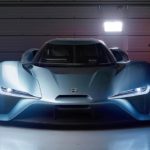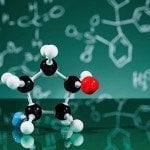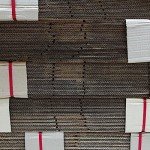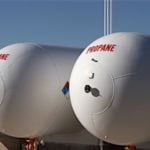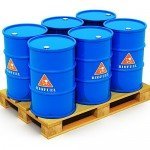The Evolution of Wind Turbine Design
Over the decades, wind turbine design has undergone significant transformations, ranging from traditional windmill-style models to modern, streamlined turbines (source: U.S. Department of Energy).
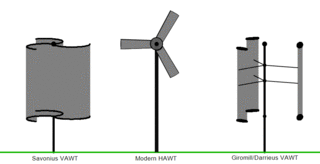
Despite these advancements, experts are focused on ongoing fundamental problems: sustainability, efficiency, cost-effectiveness, minimizing maintenance and repair, and maximizing output of wind turbines. With escalating climate concerns, the pressure to produce optimal, renewable energy solutions has never been greater. Achieving maximum efficiency with minimal environmental impact presents a complex, yet crucial challenge to engineers and designers. Innovative technology plays a key part in the quest for sustainable design solutions (source: Royal Society Publishing).
Facts at a glance
- Wind turbines convert kinetic energy from the wind into electrical energy.
- Traditional wind turbine designs have limitations in terms of efficiency and sustainability.
- Smart technologies, such as sensors and data analytics, are being integrated into wind turbines for enhanced efficiency.
- Vertical axis wind turbines (VAWTs) are an alternative design that offers advantages in certain situations.
- Floating wind turbines are being developed to harness wind energy in offshore locations.
A blimp turbine concept holds promise
The Quest for Maximum Efficiency: Innovations in Rotor Blade Design
Over the past year, improvements in rotor blade design have significantly contributed to the quest for maximum wind turbine efficiency. Specifically, blade technology has been the subject of many groundbreaking innovations, including the development of larger, more aerodynamic designs and the use of advanced materials, among others.
Efficiency is not just about generating more power, but also about making the most out of every gust of wind.
– David Hall
Early 2021 saw a momentous breakthrough in rotor blade aerodynamics, thanks to Enercon’s addition to their EP3 platform – a new blade design that increased energy yield by 10% under average wind conditions1. The unprecedented width of the chord and unique shape design reduced turbulence, enhancing the wind flow around the blade.
Material innovation also took major strides in 2021, particularly the incorporation of carbon fiber additive manufacturing. This was adopted primarily to overcome the limitations of traditional materials like fiberglass and reinforced plastic in producing larger and more efficient rotor blades2.
Sustainability is not a choice, but a necessity in the face of climate change.
– Greta Thunberg
Furthermore, General Electric (GE) has implemented trail edge serrations in its rotor blade design3.
These trail edge serrations, similar to the fin edges of an owl, reduce noise and increase aerodynamic efficiency by modifying the air flow. It might sound minor, but even a small increase in efficiency can lead to significant savings in energy costs over the long term, thereby increasing the sustainability of wind power systems. This innovation is an excellent example of biomimicry, where natural designs inspire engineering solutions.
Blimp Windmills?
Another promising trend in wind turbine design focuses on the turbine’s height. For instance, Altaeros Energies has developed an innovative automatic airborne wind turbine (the BAT) that operates at an incredible 600 meters above ground level4. This high-flying design aims to take advantage of stronger and more consistent wind conditions at higher altitudes, vastly improving efficiency.
Kite Windmills? Courtesy of X
In contrast, Makani Power, recently acquired by Google’s subsidiary X5, revolutionized wind energy with kites that generate power as they swoop through the air. These kite turbines are lighter, more adaptable and can reach further into the upper echelons of the atmosphere, capturing untapped energy. Although Makini appears to be discontinued, it is one of the most innovative new solutions to wind power that may evolve further in its next iteration.
Dynamic Blade Design and Self-Regulation
A new approach to blade design has emerged as well. Variable pitch blades, rather than maintaining a constant angle to the wind, can adjust their pitch both to optimize energy capture and to protect the system in high-wind conditions. Alongside this, self-regulating turbines have also made a significant impact. These sophisticated turbines can adjust their blade angles, direction, and speed based on the real-time wind conditions, optimizing energy capture and reducing wear and maintenance demands.
Innovation is the key to unlocking the true potential of wind energy.
– Elon Musk
The importance of these developments cannot be overstated. While some of these designs still have their challenges to overcome, we are undoubtedly witnessing a transformative period in wind turbine technology. It has opened up new possibilities for the future of renewable wind energy, establishing a more sustainable and efficient way of tapping into the power of the wind.
Scaling Up: Advances in Offshore Wind Turbine Technology
Chief among these is the shift towards building larger turbines. Larger wind turbines capture more wind energy, leading to greater energy output per installation. As per a report by Global Wind Energy Council, offshore wind turbines have steadily increased in size, from an average of 3 MW in 2010 to an estimated 10 MW by 2022.
Moreover, floating offshore wind turbines are emerging as the next big thing. These turbines are not anchored to the seabed, making them ideal for deep-water locations where traditional bottom-fixed turbines can’t reach. In February 2022, Vestas, a leading wind turbine manufacturer, announced they’re developing a full-scale floating offshore wind turbine. This innovation is expected to unlock wind energy potential in previously inaccessible areas.
There is a growing trend towards harnessing artificial intelligence (AI) and the Internet of Things (IoT) to optimize wind turbine performance and maintenance. Siemens Gamesa, for example, has a solution called Siemens Gamesa Diagnostic Services, expected to be widely adopted by 2022. It uses machine learning algorithms to predict potential faults and streamline maintenance, thereby increasing overall turbine efficiency.
Addressing Environmental Concerns: Noise Reduction and Bird Protection
Noise pollution from wind turbines and the threat they pose to birds are two major issues that engineers are working on, with some innovative solutions.
Noise Factor
Noise is created from both the mechanical and aerodynamic components of wind turbines 1. One solution to this problem comes from German energy company Enercon, which introduced a new model of wind turbine equipped with a gearless design that significantly reduces mechanical noise 2. On the aerodynamic front, researchers at the University of Cambridge used inspiration from owls to reduce noise levels. By imitating the structure of owl feathers, they created a coating for turbine blades that cut noise significantly 3.
Bird Kill
Aside from various deterrent methods like audible signals or visual stimuli, innovative designs are tackling the problem head-on. One such example is the development of a bladeless wind energy converter by Spanish startup Vortex Bladeless. Its bladeless design is not only less noisy but would also pose less danger to flying wildlife 4. (BBC)
Similarly, U.S. company SheerWind is developing a technology called Invelox, which channels wind through a funnel and into a ground-based generator – reducing the potential threat to birds and bats because most of the mechanical parts are at ground level 5. (Popular Mechanics)
These are just a handful of the steps being taken towards creating a wind energy sector that is not only effective in harnessing nature’s power–but is also respectful of it.

